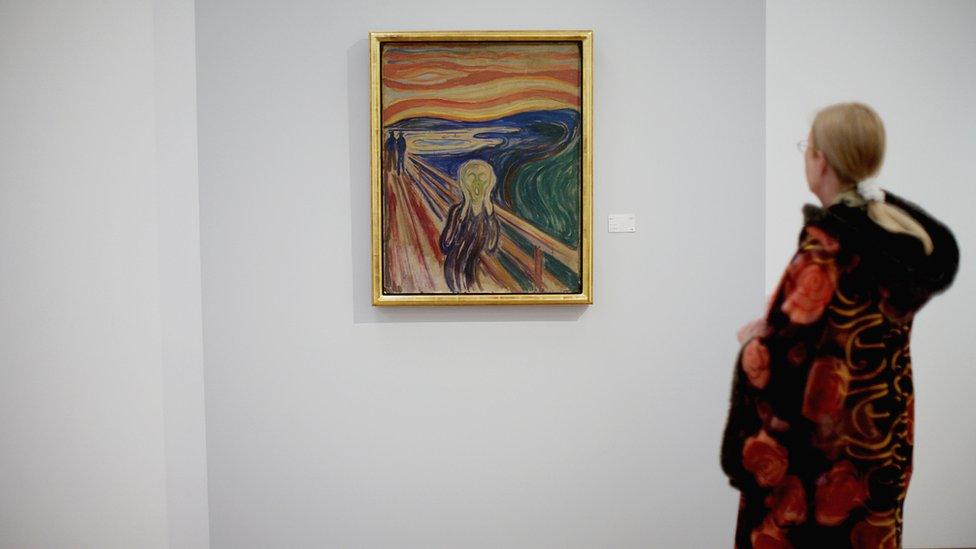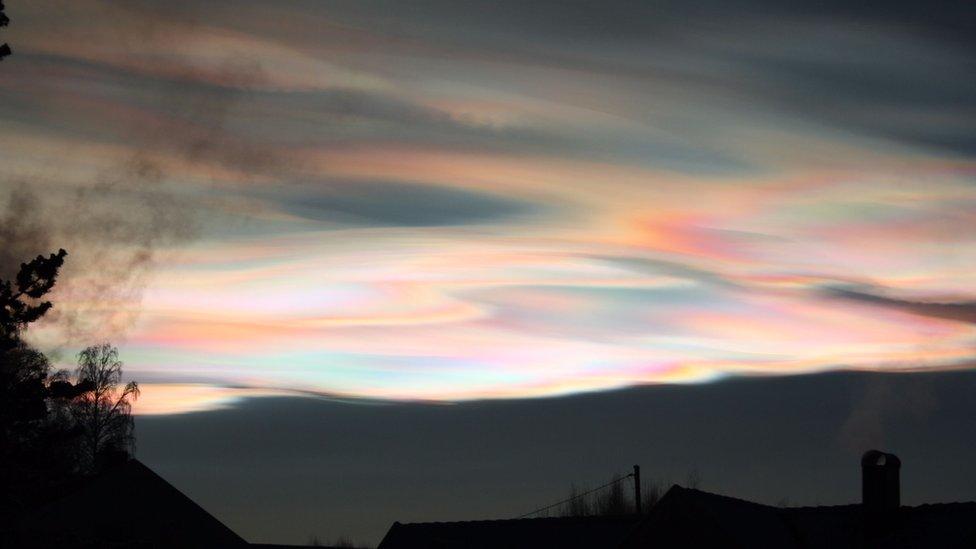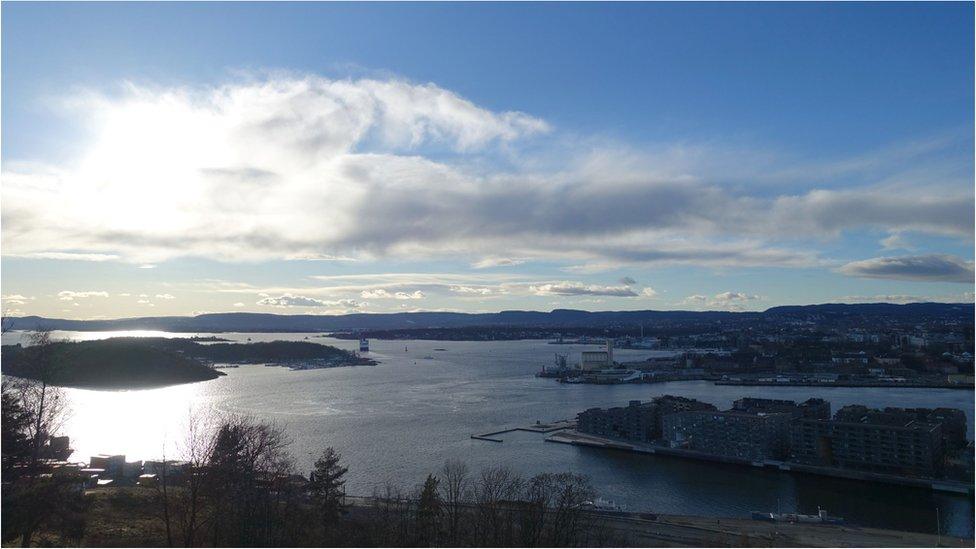Munch inspired by 'screaming clouds'
- Published

Edvard Munch's The Scream: One of the world's most famous works of art
Norwegian scientists have put forward a new theory to explain the inspiration behind one of the most famous works of art ever produced.
The Scream (1892), by Edvard Munch, depicts a figure holding its face, which is making an agonised expression.
But look above this individual and the sky is full of colourful wavy lines.
The researchers say these are probably Mother of Pearl Clouds - rare phenomena that would have had a big impact on anyone who saw them for the first time.
"Today the general public has a lot more scientific information but you can imagine back in his day, he'd probably never seen these clouds before," said Helene Muri from the University of Oslo.
"As an artist, they no doubt could have made quite an impression on him."
Dr Muri was speaking here in Vienna at the European Geosciences Union (EGU) General Assembly.

Mother Of Pearl Clouds seen at Lørenskog, Norway, in 2014

From Munch’s diary notes, 1890-1892
"I went along the road with two friends – the sun set
I felt like a breath of sadness -
The sky suddenly became bloodish red
I stopped, leant against the fence, tired to death - watched over the
flaming clouds as blood and sword the city - the blue-black fjord and the city
- My friends went away - I stood there shivering from dread - and
I felt this big, infinite scream through nature"

The unusual sky formation in The Scream has previously been ascribed to volcanic effects.
Just nine years before Munch's first rendering of The Scream, Krakatoa famously blew its top.
This eruption in what is now Indonesia was one of the biggest such events in recorded history, and its sulphurous emission circled the globe to generate some spectacular sunsets.
But the Norwegian group argues that the wavy shapes painted by Munch are a far better match for what are termed Polar Stratospheric (Type II) Clouds; or as they are also sometimes called - Nacreous Clouds.
Helene Muri: "They would have made quite an impression on the artist"
Their rarity comes from the very particular conditions needed in their formation, at altitudes between 15km and 20km.
These requirements include not only very cold winter air, down at minus 80-85C, but a good degree of humidity as well.
Atmospheric flow up and over mountains helps because it can inject moisture from the troposphere into the stratosphere, followed by a process called adiabatic cooling that can then greatly reduce air temperatures.
"That's when you can get very small ice crystals of about one micrometer," explained Dr Muri.
"These clouds are very thin and are best seen just before sunrise and after sunset, when the sun is below the horizon.
"You get these very distinct colourings, from the combination of scattering, diffraction and internal refraction of the sunlight on these tiny ice crystals."
Dr Muri has lived in the Oslo area for 25 years. She says she has seen the iridescent clouds only once with her own eyes - and she knows precisely when and what to look for.
Such phenomena could have taken Munch completely by surprise, she believes.

The background to The Scream was Oslo fjord, but what was the inspiration?
The team first started investigating the possible link between the unusual meteorology and The Scream when consultant Svein Fikke observed a display of the clouds in 2014.
He managed to take a series of stunning photos, and then started delving deeper into the story.
Some very rare cloud types are reported to be increasing in frequency and distribution, perhaps due to climate change.
An example would be Noctilucent Clouds. These are the highest clouds on Earth, forming at altitudes of 80km and more. There is evidence to suggest they are becoming more visible at lower latitudes than used to be the case.
It is conceivable similar trends might occur with Nacreous Clouds, Dr Muri said, although no statistics can justify such a statement yet.
"We know that the troposphere is warming and expanding while the stratosphere above is compressing and cooling. So, the temperature characteristics of minus 80C and below might become commonplace in the future," she speculated.